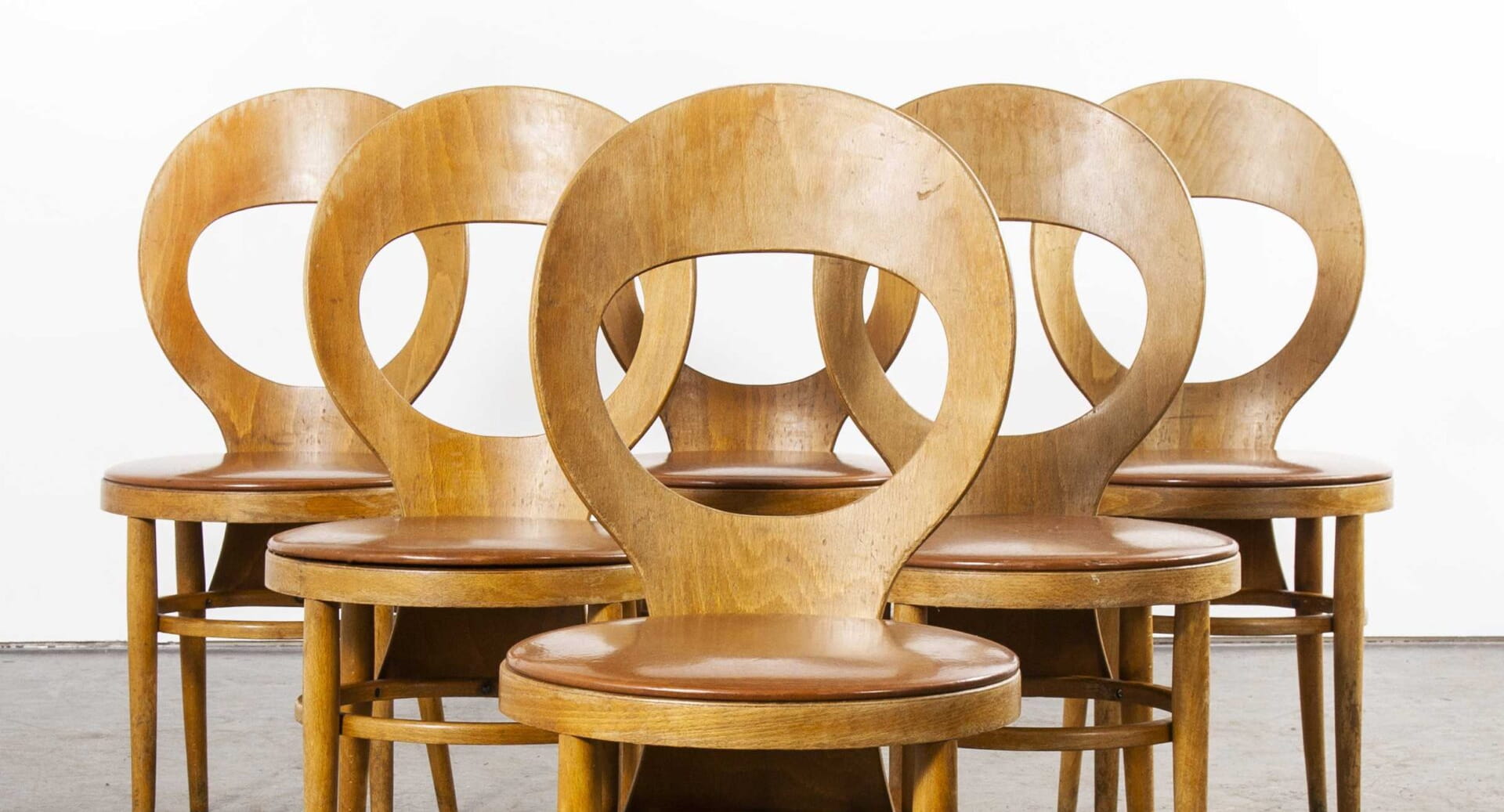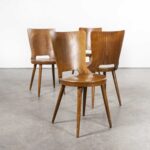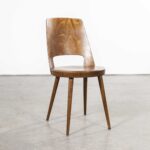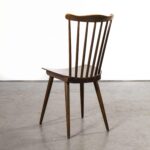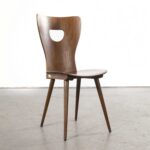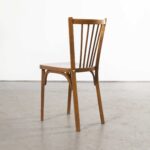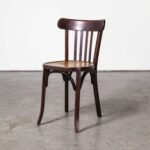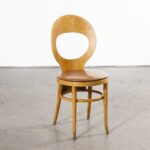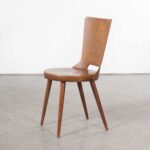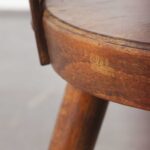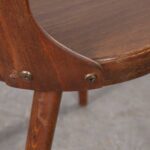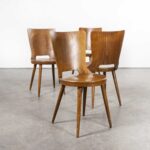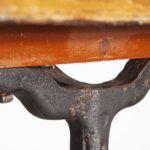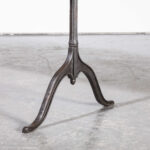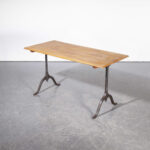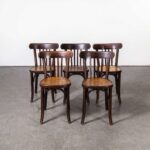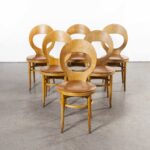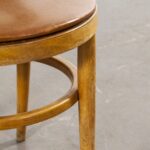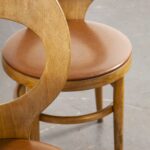Over the years, I have been lucky enough to see and handle literally thousands of chairs. I have bought chairs and developed chairs in factories all over the world, and after a while, it becomes an all-consuming obsession. Before I get on to Baumann, there are a few things I need to explain about chairs.
Firstly, like a cotton shirt or a ceramic plate chairs have been around for a very, very, long time, I’m not sure we know who produced the first one, but perhaps it was simply a favourite rock or tree stump, the fact is weary legs drove the creative minds to come up with somewhere to rest. The second aspect stems from the first, since time in memoriam designers, producers and users have been designing and developing different chairs. It astounds me how for such a simple piece of practical furniture, the world can keep coming up with different designs for what is essentially somewhere to rest.
The design of chairs has of course been driven by the designs and fashions of the day and each design period has had its own very recognisable shape, whether that be the Chippendale chair of the 18th Century or the balloon back chair of the Victorians. And lastly, again related to all the above, the advance of chair design has usually been fuelled by the discovery of a new material or production process. The Bauhaus were the first to really exploit tubular metal in chair production, Eames applied the new material plywood and then fiberglass and so on.
And the last intriguing fact is that a good chair is often produced in vast volumes, think about it, every bottom needs a chair but say a group sits around a table (Oooh, think hotels, conferences, schools and the cash register starts ringing) then by ratio you always need more chairs to tables. So, a commercial designer is driven by the greed of unending chair royalties and the ‘fame’ that comes with a successful new design.
The long and the short of it is simply that every designer worth his or her salt wants to create a famous chair, it is the pinnacle of success both egotistically and financially to nail that successful chair design and have it produced in volume. Chairs have by default pretty much-driven furniture design since furniture design mattered. So, I guess that’s why I am a bit obsessed with vintage seating, they are a very good marker for the various fashions in furniture design and tend to represent the major milestones along the way. Don’t worry; we are getting closer to the Baumann story.
- DOVE
- MONDOR
- SPINDLEBACK
- GENTIANNE
- CLASSIC
- BISTRO
- CAFE
- MOUETTE
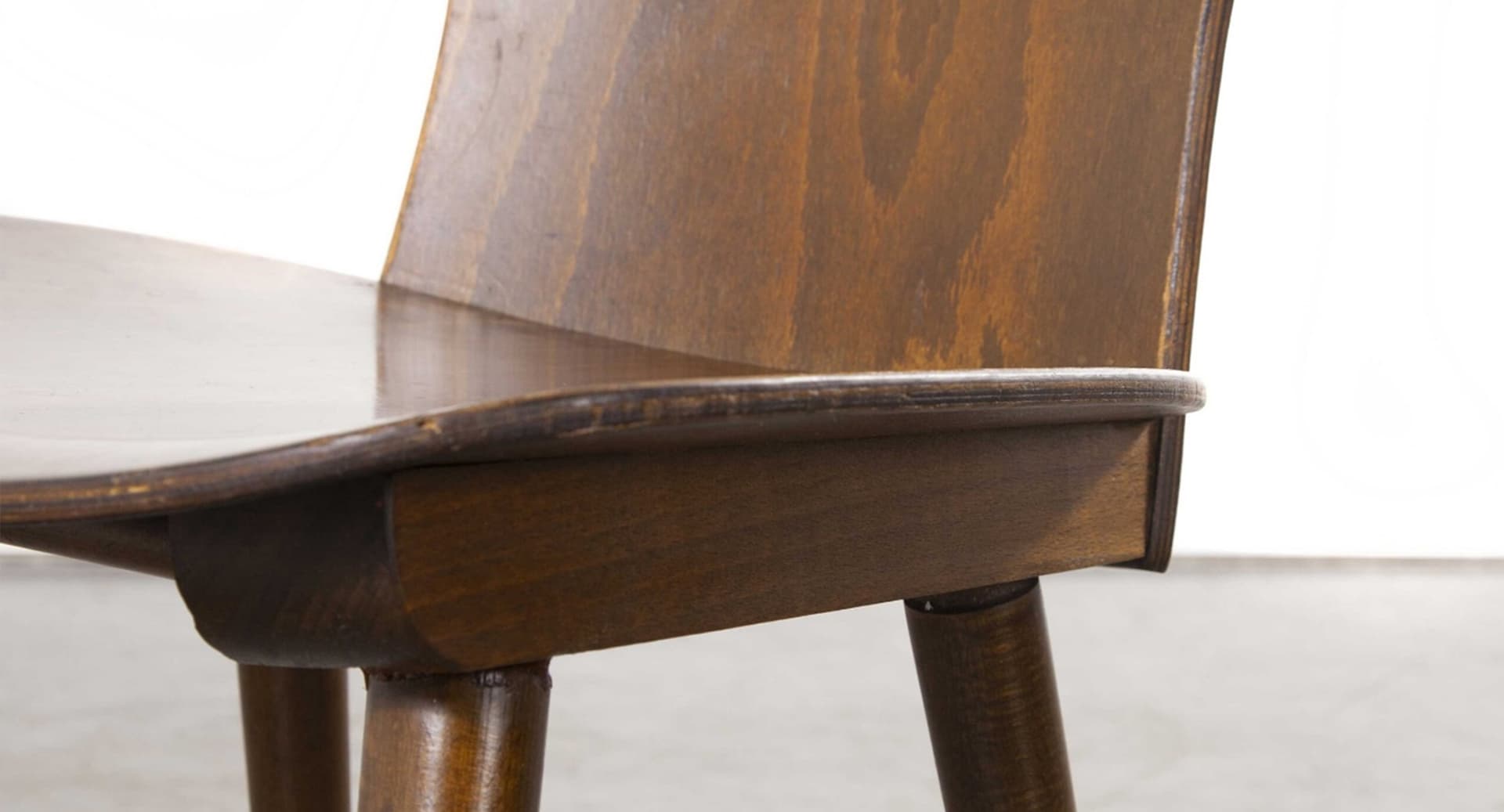
The Origins of Steam Bending
One of the major chair milestones was the industrialisation of the manufacturing process made by Thonet in the 19th Century. As the industrial revolution boomed, the demand for well-priced industrially produced furniture skyrocketed.
The first person to spot that opportunity was Michael Thonet when in the 1850’s he pioneered the process for steam bending beech, which ultimately made chairs both easier and more economical to produce but also allowed unseen before creativity in chair design. Thonet and his bentwood process facilitated the creation of arguably the most famous chair of all time chair, Number 14 – better known as the coffee shop chair. It is said that over fifty million of these chairs have been produced to date, and it is to this day still very successfully produced in large volumes.
The steam bending technique allowed for the industrial production of a chair for the first time ever. The second milestone of the chair was the fact that it could be disassembled into a few components allowing economies of scale in production akin to the capitalist observations of economist Adam Smith. The chair could thus also be exported globally in smaller economic packaging.
In the nineties, I had the privilege of going to an original Thonet factory in Czech and was captivated by the process, long lengths of thick beech perhaps 4cm by 5cm were super-heated in pressurised steam chambers. When they were ready, they were pulled out and ‘bent’ by the biggest and strongest workers you can imagine, around steel moulds to ‘form’ the various components of a bentwood chair. I could not believe it at first, these are thick heavy bits of timber almost as floppy as spaghetti after a few hours in a steam chamber. Next time you sit on a bentwood chair look at the seat section, the ring that circles the ply seat is bent from a single piece of beech, into a circle thirty centimetres diameter.
I labour this story because it was in itself the single most important driver of chair design for the following sixty or seventy years. Thonet was so successful that he required factories throughout Europe, often in Eastern Europe where Beech was readily available, and he set up a vast network of shops selling and distributing his chairs throughout the world. It was an empire, built on the simple invention of steam bending.

And this is where Baumann was born. When some of the Thonet patents expired, the market was swamped with competitive upstart’s keen to take a slice of the pie created by Thonet. Thonet had many competitors, amongst others, Fischel, Ton, Luterma and of course Baumann. Baumann was founded in 1901, by Swiss man Emile Baumann, in Colombier Fontaine, France. Baumann started producing a simple child’s chair ‘charette’ but grew rapidly to be a large bentwood producer cleverly marketing its brand as ‘the chairs of France’.
In time, Baumann had showrooms all over France, in Paris, Lyon, Marseille, Bordeaux, Lille, Nantes, but also in Algiers, Oran and Tunis. At its peak in the ’70s, it was producing nearly one million chairs a year. It was also well known as a family business with Emile’s sons Walter and Max working in the firm as it grew exponentially in the years after the war.
What Made Baumann So Successful?
In my view, there are several notable points that fuelled Baumann’s success.
Firstly, they produced some superb classic Bentwood chairs in the manner of Thonet; they were a large producer and supply for the almost endless demand from French cafes and restaurants for what was almost the ubiquitous chair of this period. Batches of these beautiful chairs still come up, often from restaurants where they have been used for years, yet they are still in immaculate condition.
One of the strengths of these chairs is they were very well designed for contract use, and the slight give in the underframe supports meant that rather than glue joint breaking over the years they had a little bit of inbuilt flexibility and if they did develop a bit of a wobble the chairs could be simply tightened up with a few basic tools. Literally hundreds of models existed, and alongside competition from Thonet, Fischel and Luterma (to name a few) these classic Baumann chairs invaded French culture from for most of the first half of the 20th Century.
At the same time, Baumann developed and sold a range of café dining tables, and the ones we love and seek out are the cast base versions from the twenties and thirties. The cast metal bases are heavy and beautifully made, and the classic Baumann shape is a swooping bell-shaped curved leg. Hard to find these days but worth hunting out.
And lastly, we get to what perhaps our article is all about, the golden period of Baumann in the late fifties and sixties. After the war, as the dust settled and a new modernist style emerged from Scandinavia, Baumann launched a series of absolutely stunning mid-century chairs, Scandinavian Mid Century in spirit but a classic French twist and a grace that few chair producers have matched to this day.
What Made Baumann Chairs The Understated Mid Century Icon?
The chairs were based around two basic constructions. The first was a simple round seat with slim tapered and protruding legs various back options. The most beautiful models from this period are the Mondor and the Dove. And the second was using laminated wood to create a curved seat and a curved back; this was by far the most successful for Baumann with many models using this construction, Fourmi, Mouette, Gentianne to name a few.
![]()
The laminated timber construction was not new, it was pioneered by Aalvar Allto for Artek and also used in England by Isokon. To produce the required shape, a male mould was created and then on to this several thicker layers of veneer (approximately 1.2mm) were layered, each layer being generously glued. Whilst still wet and flexible the ‘pile’ of veneers would be then pressed under vacuum pressure or press weight into (or onto) the mould and left to dry in that shape. When the glue dries, the veneers retain the moulded shape, and the shaped panels are then trimmed and finished and used in the chairs. Basically, the same construction as layered plywood but laid on a shaped, not flat, mould.
In this series of designs, Baumann used a formed laminated seat and back as a construction with subtle differences in design. The chairs were incredibly strong with the backs being beautifully bolt fixed to the bases (which also allowed them to be tightened as needed) and gracefully tapered legs fitted into strong subframes. I have been lucky to see hundreds of these chairs now, and the vast majority are in excellent structural shape despite often having served over fifty years’ service in restaurants or cafes.
In my view, these mid-century laminated chairs by Baumann are massively underrated, and I am not the only one to think that as demand has steadily risen and they are becoming increasingly hard to find. They are a beautiful design, well-proportioned and amazingly comfortable, beautifully made and made to last. I would stake a claim that they are one of the best mid-century chairs out there. Although they were principally designed for cafes and restaurants, they look amazing in a private setting and give a much more subtle twist to a classic mid-century dining setting than a stiff ‘matched’ table and chair combination. Don’t get me wrong, I love a bit of Scandinavian teak, but it can have a slightly linear and precise look, and as it was often designed in ‘sets’ it can be a bit showroom matchy-matchy but mix in some Baumann chairs, and you add a different dimension, a more organic form and a more relaxed feel.
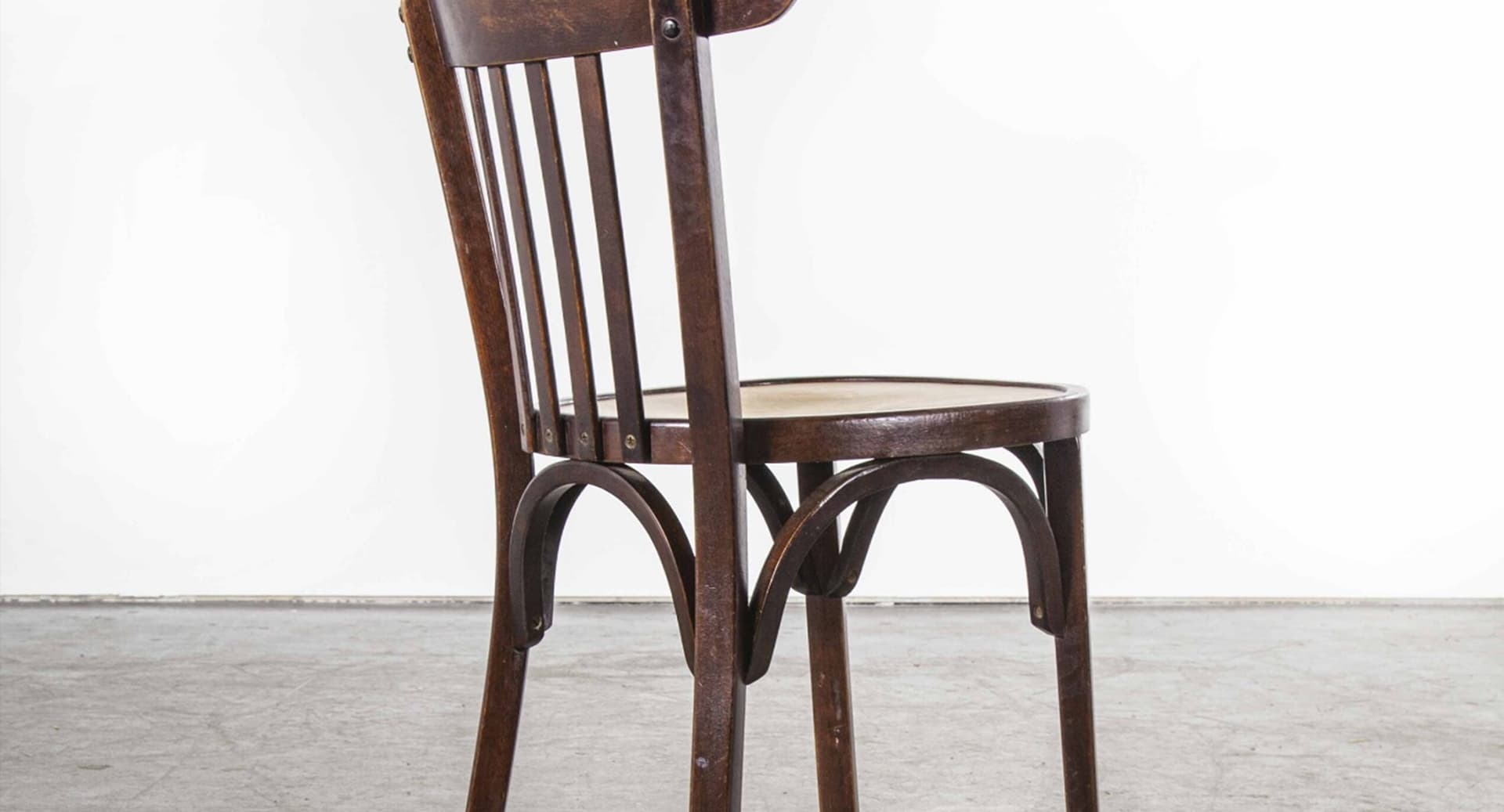
Baumann’s Heyday – 60’s and Beyond
In the sixties and seventies Baumann flourished, producing close to a million chairs a year, they exhibited at all the major furniture design fairs and continued to develop new innovative designs through the seventies and eighties. Sadly, the curtains closed on Baumann in 2003, perhaps a combination of import competition from Asia which saw huge swathes of production moved East and simply perhaps because they failed to keep pace with the rapid evolution of product trends.
Baumann is definitely one of our favourite iconic makers, and we will continue to dig into its history and share what we find. We recently bought an original 1930’s catalogue and would love to find one from the fifties if anyone reading this can help. We try to keep a decent stock of Baumann chairs and tables and love the fact that we give them a gentle clean and tighten the joints before finding new homes for these beautiful chairs.
They are getting harder to find as most of our sourcing comes from restaurants and cafes and batches of forty or so chairs are drying up. My advice is snap them up whilst you can and hang on to them, they will undoubtedly appreciate over the coming years, and besides, you will know you are sitting on some of the most beautiful chairs ever produced.
Click here to see our current range of vintage Baumann chairs. You can also contact us on +44 (0) 1256 760 044 or email paul@merchantandfound.com.
- DOVE
- DOVE
- DOVE
- DOVE
- CAST
- CAST
- CAST
- CAST
- CAFE
- CAFE
- CAFE
- MOUETTE
- MOUETTE
- MOUETTE
- MOUETTE

